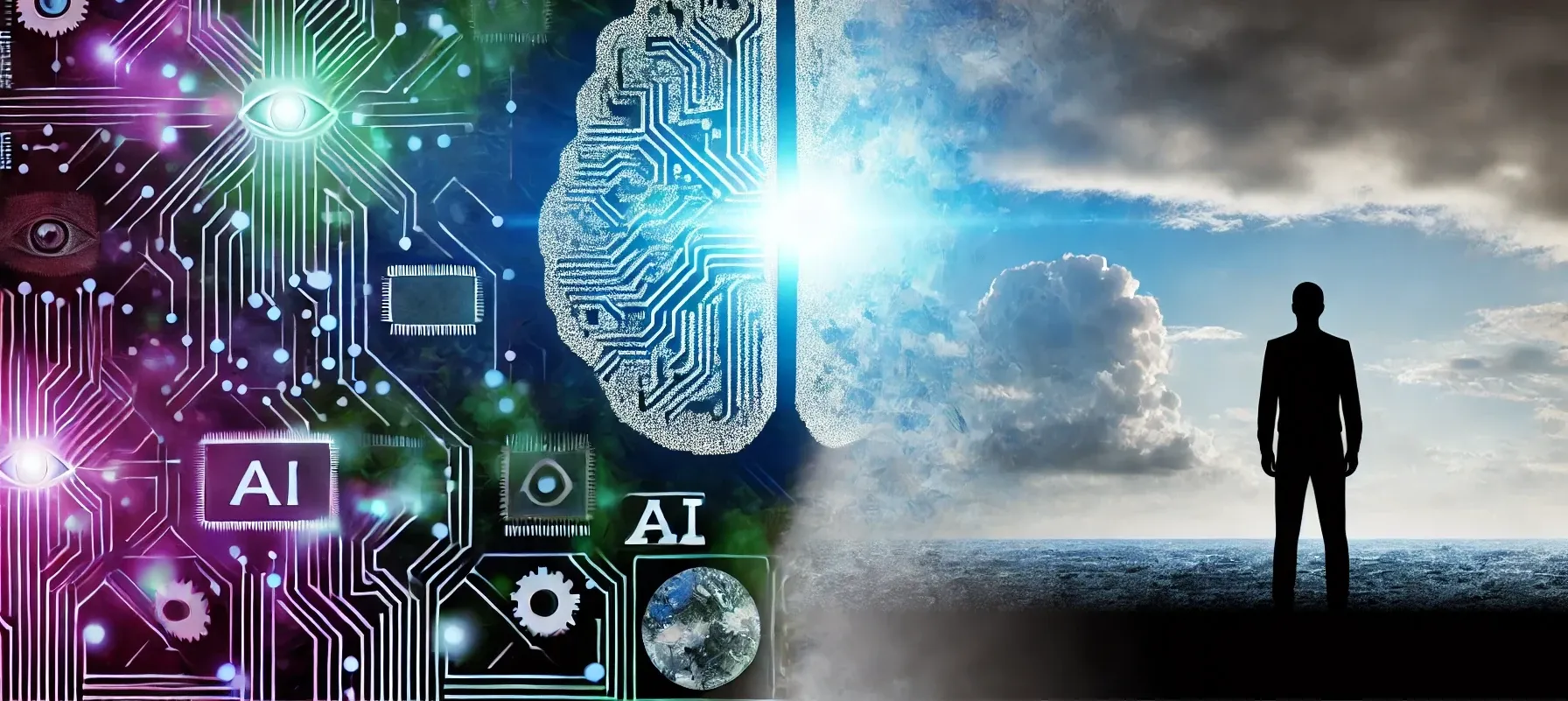
Have Alex read this article for you.

In the midst of the rapidly advancing technological landscape, few innovations have generated as much excitement—and fear—as artificial intelligence (AI). For those of us who have embraced it, AI is nothing short of revolutionary. It has the potential to change the world in ways that rival the most significant technological shifts in history: the invention of electricity, the advent of home computers, the rise of the internet, and the proliferation of mobile internet devices. Yet, despite its transformative power, AI is still met with resistance and skepticism by many. This divergence in attitudes toward AI speaks to a broader societal divide, one that we might characterize as the difference between "thinkers" and "non-thinkers."
The Awe of AI: A New Technological Revolution
To those who have taken the plunge into AI, the technology is awe-inspiring. The ability to generate human-like text, create art, compose music, and even solve complex problems feels like we are standing on the cusp of a new era. AI is not just a tool; it is a new frontier, akin to the early days of the internet or the first personal computers. For "thinkers"—those who are intellectually curious, open to innovation, and constantly seeking ways to enhance their lives—AI represents endless possibilities. These are the people who have already integrated AI into their daily routines, using it to brainstorm ideas, automate mundane tasks, and push the boundaries of creativity.
However, as with any powerful tool, AI comes with its own set of challenges and responsibilities. There is a growing concern among some early adopters that as AI becomes more mainstream, it could be "ruined" by the world in the same way that the internet and other technologies have been. This fear is not unfounded. As AI becomes more accessible, there is a risk that it could be misused or that its potential could be stifled by those who do not fully understand it.
Public Perception: The Reluctance to Embrace AI
Despite the incredible potential of AI, many people remain wary or uninterested. When introducing AI to others, particularly those who are less tech-savvy, the reaction is often one of disinterest or even fear. This reluctance to engage with AI can be puzzling to those of us who see it as the next logical step in the evolution of technology. Why are so many people resistant to something that could so clearly enhance their lives?
One reason may be that the AI most people are exposed to today is superficial. They see AI as a tool for creating pictures, writing essays, or generating deep fakes—functions that, while impressive, do not necessarily demonstrate the full scope of what AI can do. To the average person, AI may seem like a novelty rather than a necessity, something that is interesting to play with but not essential to daily life.
Another reason for this resistance may be rooted in fear. AI is complex and unfamiliar, and it challenges the status quo in ways that can be uncomfortable. For those who are content with their current routines, the idea of incorporating something as powerful as AI into their lives can be daunting. There is also the concern that AI could replace human jobs, contribute to misinformation, or be used for unethical purposes. These fears, whether justified or not, contribute to the hesitation many people feel toward embracing AI.
Thinkers vs. Non-Thinkers: A Divided Society
The difference in attitudes toward AI can often be traced back to a deeper divide in society, one that we might describe as the difference between "thinkers" and "non-thinkers." "Thinkers" are those who are naturally inclined to explore new ideas and technologies. They see the world as a place of endless possibilities, where innovation is a constant and necessary force for progress. For them, AI is a tool to be embraced, something that can enhance their lives and help them achieve their goals more efficiently.
On the other hand, "non-thinkers" are those who are more set in their ways. They are less likely to explore new technologies unless they are absolutely necessary, and they are more comfortable sticking with what they know. For these individuals, AI is not something they see as relevant to their lives. Their current systems work well enough, and they see no need to change them. This is not to say that "non-thinkers" are any less intelligent or capable, but rather that they are less inclined to disrupt their routines for the sake of new technology.
The Challenge of Adoption: How Hard Should We Push?
As AI continues to evolve, a key question emerges: How hard should we push others to adopt this technology? On one hand, we want to share the benefits of AI with others, especially those who may not yet realize how much it could enhance their lives. On the other hand, there is a valid concern that pushing too hard could lead to the very outcomes we fear—misuse, misunderstanding, and ultimately, the dilution of AI's potential.
There is a delicate balance to be struck here. While it is important to advocate for the responsible use of AI and to educate others about its benefits, it is equally important to respect individual choice. Not everyone will be ready to embrace AI at the same pace, and that is okay. What matters is that when they are ready, the tools and resources are available to help them integrate AI into their lives in a meaningful and responsible way.
Conclusion: The Future of AI and Society
The AI revolution is still in its early stages, and its full impact on society remains to be seen. What is clear, however, is that AI has the potential to be one of the most significant technological advancements in history. As with any powerful tool, its success will depend largely on how it is adopted and used by society.
For "thinkers," AI is already an indispensable part of life, a tool that enhances creativity, productivity, and problem-solving. For "non-thinkers," the path to adoption may be slower and more cautious, but that does not mean they will not eventually see the value of AI.
In the end, the goal should not be to force AI on those who are not ready but to create an environment where its benefits are clear and accessible to all. The future of AI will be shaped by how well we navigate this delicate balance between innovation and caution, between enthusiasm and skepticism. If we can do that, AI has the potential to not only revolutionize technology but to truly enhance the human experience.
AIT

